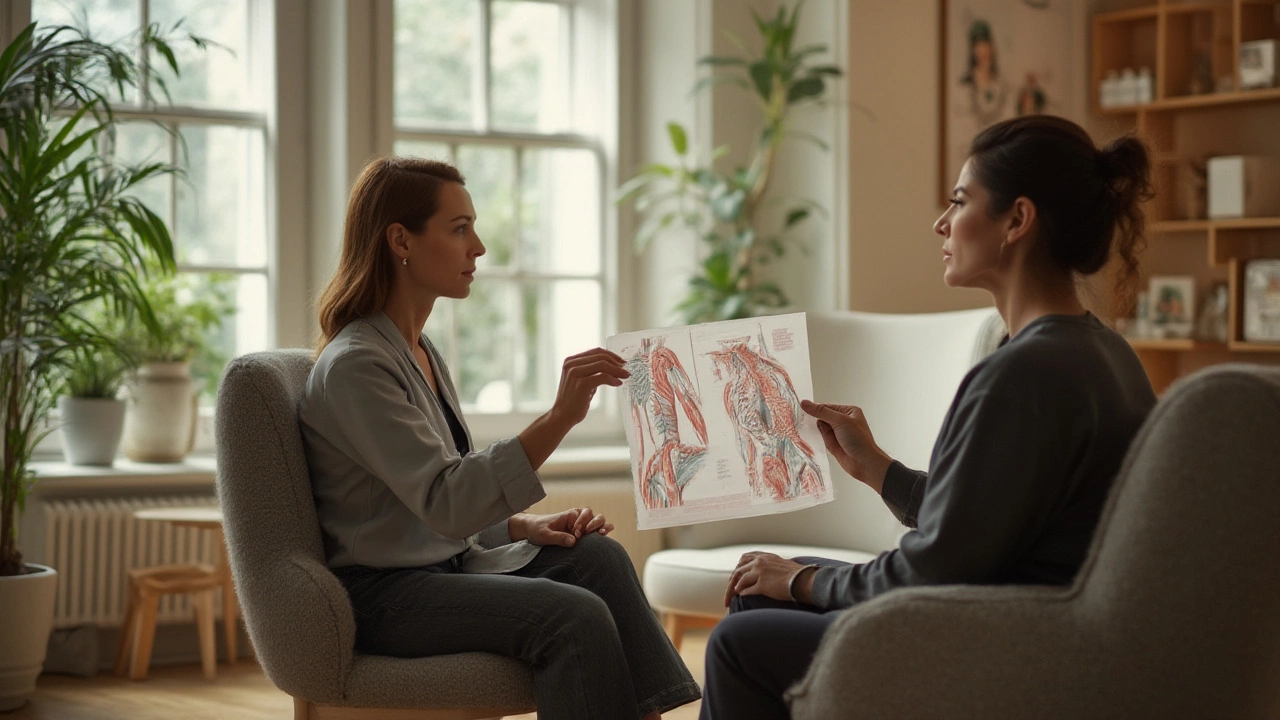Discover how deep tissue massage helps fight muscle knots. Learn the benefits, what to expect in London, pricing, booking tips, and safety guidelines for a better, pain-free you.
Muscle Pain Relief Made Easy with Massage
Got a sore neck, tight shoulders, or achy calves after a workout? You don’t need a fancy clinic to feel better. A well‑done massage can melt tension, improve circulation, and speed up recovery. Below are simple, practical tips you can use right now.
Why Massage Helps Muscle Pain
Massage works by pressing on tight fibers, breaking up knots, and encouraging blood flow. More blood means more oxygen and nutrients get to the sore area, which speeds up the healing process. It also triggers the release of endorphins, the body’s natural painkillers, so you feel less discomfort.
Quick Techniques You Can Try at Home
1. The Classic Knead. Use your thumb or fingertips to press deep into a knot for 10‑15 seconds, then release and repeat. This mimics what a therapist does and is great for shoulders and upper back.
2. Gentle Rolling. Grab a foam roller or a firm tennis ball. Lie on it and slowly roll over the sore muscle for 1‑2 minutes. The pressure is constant, and you can control how hard it feels.
3. Stretch‑and‑Massage Combo. After a short massage, stretch the same muscle for 20‑30 seconds. Stretching locks in the increased blood flow and helps the muscle stay loose longer.
4. Warm‑Up First. Apply a warm compress or take a warm shower before you massage. Warmth makes muscles more pliable, so you’ll get better results without hurting yourself.
5. Keep It Light on Joints. If you have pain near a joint, use lighter pressure and focus on the surrounding tissue. Heavy pressure on joints can cause more irritation.
These techniques take only a few minutes, but they can change how you feel after a hard day or a tough workout.
If you prefer professional help, London offers plenty of qualified therapists who specialize in sports, deep‑tissue, and Swedish massage. Look for a therapist who asks about your specific pain points and tailors the session to your needs. A short 30‑minute session can be enough to reset tight muscles.
When you book a therapist, pay attention to cleanliness, licensing, and client reviews. A trusted therapist will explain what they’re doing, ask about pressure levels, and make sure you’re comfortable throughout.
Don’t forget to stay hydrated after any massage. Drinking water helps flush out toxins released from the muscles and supports the recovery process.
Finally, combine massage with other good habits: regular stretching, balanced nutrition, and enough sleep. Muscle pain often comes from a mix of factors, and massage is just one piece of the puzzle.
Give these tips a try today. Whether you’re easing post‑gym soreness or dealing with everyday tension, a little focused massage can bring real relief without the hassle. Your muscles will thank you.

